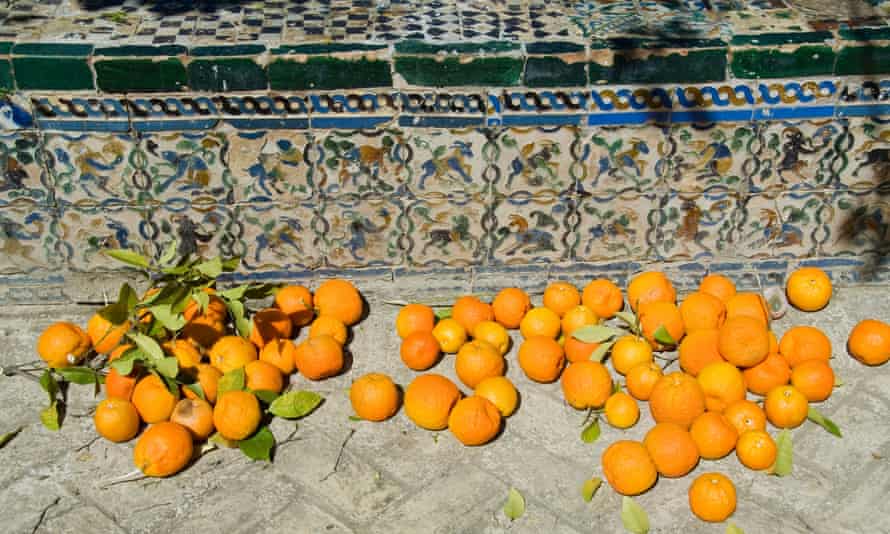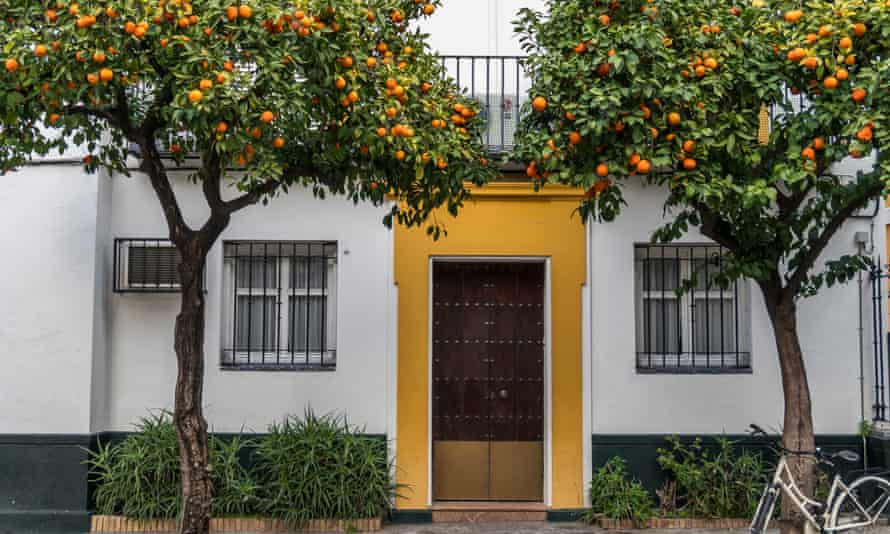In spring, the air in Seville is sweet with the scent of azahar, orange blossom, but the 5.7m kilos of bitter fruit the city’s 48,000 trees deposit on the streets in winter are a hazard for pedestrians and a headache for the city’s cleaning department.
Now a scheme has been launched to produce an entirely different kind of juice from the unwanted oranges: electricity. The southern Spanish city has begun a pilot scheme to use the methane produced as the fruit ferments to generate clean electricity.
The initial scheme launched by Emasesa, the municipal water company, will use 35 tonnes of fruit to generate clean energy to run one of the city’s water purification plants. The oranges will go into an existing facility that already generates electricity from organic matter. As the oranges ferment, the methane captured will be used to drive the generator.
“We hope that soon we will be able to recycle all the city’s oranges,” said Benigno Lopez, the head of Emasesa’s environmental department. To achieve this, he estimates the city would need to invest about EUR250,000.
“The juice is fructose made up of very short carbon chains and the energetic performance of these carbon chains during the fermentation process is very high,” he said. “It’s not just about saving money. The oranges are a problem for the city and we’re producing added value from waste.”

While the aim for now is to use the energy to run the water purification plants, the eventual plan is to put surplus electricity back into the grid. The team behind the project argues that, given the vast quantity of fruit that would otherwise go into landfill or be used as fertiliser, the potential is huge. They say trials have shown that 1,000kg will produce 50kWh, enough to provide electricity to five homes for one day, and calculate that if all the city’s oranges were recycled and the energy put back into the grid, 73,000 homes could be powered.
“Emasesa is now a role model in Spain for sustainability and the fight against climate change,” Juan Espadas Cejas, the mayor of Seville, told a press conference at the launch of the project.
“New investment is especially directed at the water purification plants that consume almost 40% of the energy needed to provide the city with drinking water and sanitation,” he said.
“This project will help us to reach our targets for reducing emissions, energy self-sufficiency and the circular economy.”
The oranges look pretty while on the tree but once they fall and are squashed under the wheels of cars the streets become sticky with juice and black with flies. The city council employs about 200 people to collect the fruit.
The bitter oranges, which originate in Asia, were introduced by the Arabs around 1,000 years ago and have adapted well to the southern Spanish climate.

“They have taken root here, they’re resistant to pollution and have adapted well to the region,” said Fernando Mora Figueroa, the head of the city’s parks department. “People say the city of Seville is the world’s largest orange grove.”
The region produces about 15,000 tonnes of the oranges but the Spanish don’t eat them and most of the fruit from the surrounding region is exported to Britain, where it is made into marmalade. Seville oranges are also the key ingredient of Cointreau and Grand Marnier.
The origin of marmalade is surrounded by myths and legends. Some link it to British copper miners working for Rio Tinto in nearby Huelva, the same miners who founded Spain’s first football team, Recreativo de Huelva, at the end of the 19th century.
However, a handwritten recipe for marmalade dating from 1683 was found in Dunrobin castle in Sutherland in the Scottish Highlands. Legend has it that a ship carrying oranges from Spain took refuge in Dundee harbour and local confectionery maker James Keiller was the first to find a use for the otherwise inedible fruit. This may be a myth, but in 1797 Keiller did produce the first commercial brand of marmalade.